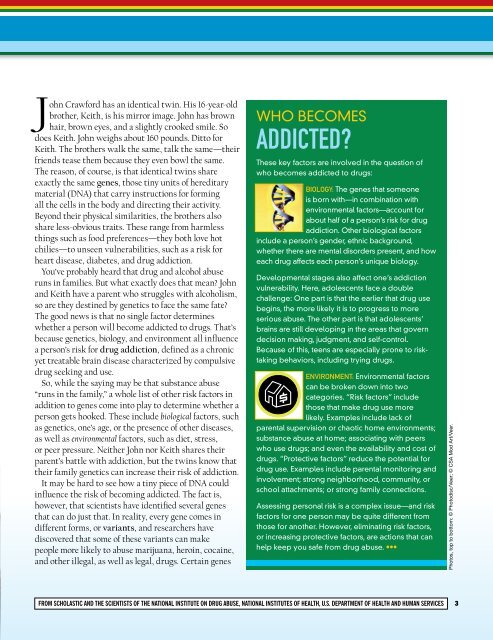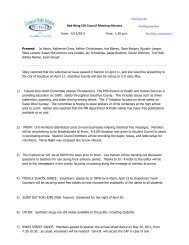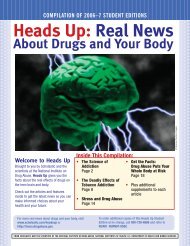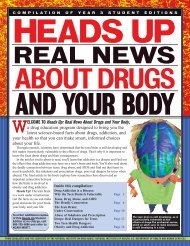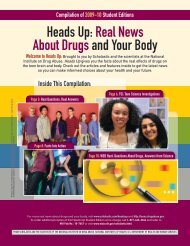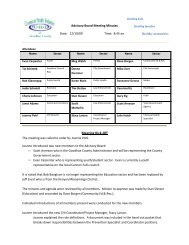Heads Up:Real News About Drugs and Your Body - Scholastic
Heads Up:Real News About Drugs and Your Body - Scholastic
Heads Up:Real News About Drugs and Your Body - Scholastic
Create successful ePaper yourself
Turn your PDF publications into a flip-book with our unique Google optimized e-Paper software.
John Crawford has an identical twin. His 16-year-old<br />
brother, Keith, is his mirror image. John has brown<br />
hair, brown eyes, <strong>and</strong> a slightly crooked smile. So<br />
does Keith. John weighs about 160 pounds. Ditto for<br />
Keith. The brothers walk the same, talk the same—their<br />
friends tease them because they even bowl the same.<br />
The reason, of course, is that identical twins share<br />
exactly the same genes, those tiny units of hereditary<br />
material (DNA) that carry instructions for forming<br />
all the cells in the body <strong>and</strong> directing their activity.<br />
Beyond their physical similarities, the brothers also<br />
share less-obvious traits. These range from harmless<br />
things such as food preferences—they both love hot<br />
chilies—to unseen vulnerabilities, such as a risk for<br />
heart disease, diabetes, <strong>and</strong> drug addiction.<br />
You’ve probably heard that drug <strong>and</strong> alcohol abuse<br />
runs in families. But what exactly does that mean John<br />
<strong>and</strong> Keith have a parent who struggles with alcoholism,<br />
so are they destined by genetics to face the same fate<br />
The good news is that no single factor determines<br />
whether a person will become addicted to drugs. That’s<br />
because genetics, biology, <strong>and</strong> environment all influence<br />
a person’s risk for drug addiction, defined as a chronic<br />
yet treatable brain disease characterized by compulsive<br />
drug seeking <strong>and</strong> use.<br />
So, while the saying may be that substance abuse<br />
“runs in the family,” a whole list of other risk factors in<br />
addition to genes come into play to determine whether a<br />
person gets hooked. These include biological factors, such<br />
as genetics, one’s age, or the presence of other diseases,<br />
as well as environmental factors, such as diet, stress,<br />
or peer pressure. Neither John nor Keith shares their<br />
parent’s battle with addiction, but the twins know that<br />
their family genetics can increase their risk of addiction.<br />
It may be hard to see how a tiny piece of DNA could<br />
influence the risk of becoming addicted. The fact is,<br />
however, that scientists have identified several genes<br />
that can do just that. In reality, every gene comes in<br />
different forms, or variants, <strong>and</strong> researchers have<br />
discovered that some of these variants can make<br />
people more likely to abuse marijuana, heroin, cocaine,<br />
<strong>and</strong> other illegal, as well as legal, drugs. Certain genes<br />
Who Becomes<br />
Addicted<br />
These key factors are involved in the question of<br />
who becomes addicted to drugs:<br />
biology: The genes that someone<br />
is born with—in combination with<br />
environmental factors––account for<br />
about half of a person’s risk for drug<br />
addiction. Other biological factors<br />
include a person’s gender, ethnic background,<br />
whether there are mental disorders present, <strong>and</strong> how<br />
each drug affects each person’s unique biology.<br />
Developmental stages also affect one’s addiction<br />
vulnerability. Here, adolescents face a double<br />
challenge: One part is that the earlier that drug use<br />
begins, the more likely it is to progress to more<br />
serious abuse. The other part is that adolescents’<br />
brains are still developing in the areas that govern<br />
decision making, judgment, <strong>and</strong> self-control.<br />
Because of this, teens are especially prone to risktaking<br />
behaviors, including trying drugs.<br />
Environment: Environmental factors<br />
can be broken down into two<br />
categories. “Risk factors” include<br />
those that make drug use more<br />
likely. Examples include lack of<br />
parental supervision or chaotic home environments;<br />
substance abuse at home; associating with peers<br />
who use drugs; <strong>and</strong> even the availability <strong>and</strong> cost of<br />
drugs. “Protective factors” reduce the potential for<br />
drug use. Examples include parental monitoring <strong>and</strong><br />
involvement; strong neighborhood, community, or<br />
school attachments; or strong family connections.<br />
Assessing personal risk is a complex issue—<strong>and</strong> risk<br />
factors for one person may be quite different from<br />
those for another. However, eliminating risk factors,<br />
or increasing protective factors, are actions that can<br />
help keep you safe from drug abuse. •••<br />
Photos, top to bottom: © Photodisc/Veer; © CSA Mod Art/Veer.<br />
FROM SCHOLASTIC AND THE SCIENTISTS OF THE NATIONAL INSTITUTE ON DRUG ABUSE, NATIONAL INSTITUTES OF HEALTH, U.S. DEPARTMENT OF HEALTH AND HUMAN SERVICES 3


